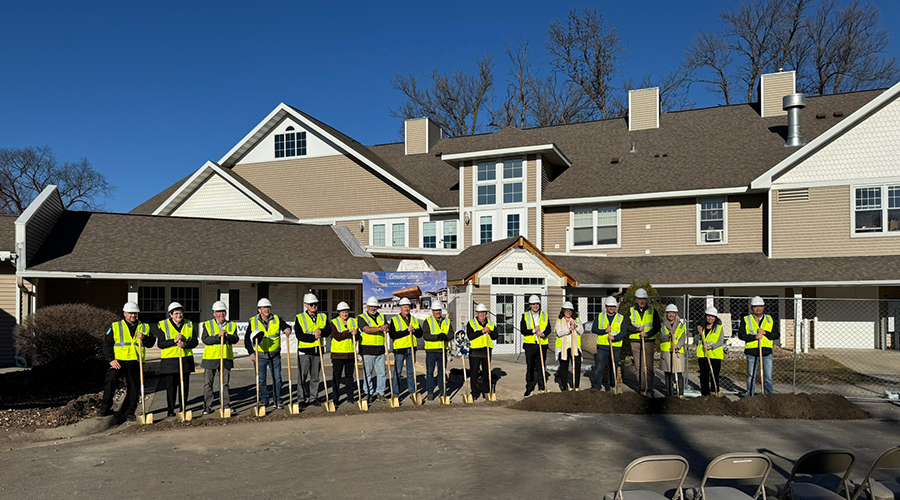Burdensome documentation and gaps in care have been long-standing challenges in the healthcare industry
The COVID-19 pandemic has amplified those challenges on a global level, creating a situation in which people have been hesitant to seek care for other medical concerns. As such, healthcare providers are losing revenue, employees are losing their jobs, and those remaining in the workforce are subject to burnout.
In an effort to prevent the spread of COVID-19, many healthcare providers proactively reduced or stopped in-person visits for non-COVID-19 medical needs, ranging from the routine care of a sore throat to treatment of chronic conditions, cancer, and even mental health services.
Additionally, nearly one-third of American adults reported delaying or avoiding medical visits over concerns for possible exposure to the virus, according to an American College of Emergency Physicians and Morning Consult poll. More than half reported worrying about access to their primary care physician or being turned away from the hospital.
As a result, healthcare spending decreased by 18 percent in the first quarter of 2020, according to the U.S. Bureau of Economic Analysis. Surprisingly, some 1.4 million healthcare workers lost their jobs in April, a sharp increase from the 42,000 reported in March, according to the U.S. Bureau of Labor Statistics.
The global pandemic amplifies the day-to-day challenges of identifying gaps in care, the increased documentation required to track them, and the difficulties associated with determining their effects and responding with appropriate interventions.
The impact of this virus looms over the backdrop of a healthcare environment in which the American Hospital Association (AHA) makes the point is rapidly evolving from a fee-for-service system into a value-based delivery system. As healthcare providers and payers transition to collaborative digital care delivery models, this movement highlights the greater need for a data infrastructure that supports value-based care with sharper and more transparent insights into population health.
Interoperability, data analytics mitigate challenges
To close the gaps in healthcare delivery, healthcare organizations first need to drill deep into a patient’s clinical information and identify the underlying gaps. That’s no small task given that data and different ID numbers from heterogeneous sources be matched to a patient.
Only recently, value-based healthcare got a boost from the final rule issued by the U.S. Department of Health and Human Services (HHS) Office of the National Coordinator for Health Information Technology (ONC) and Centers for Medicare and Medicaid Services (CMS) that implement interoperability and patient access provisions of the bipartisan 21st Century Cures Act. These extensive healthcare data-sharing policies require public and private entities to share health information between patients and other parties while maintaining privacy.
The final rule is a positive nudge towards giving patients unprecedented safe, secure access to their health information. Equipping patients with true access to their healthcare records to make informed healthcare decisions and better manage their care is a key factor in empowering patients and giving them more control in healthcare. However, given that data is highly fragmented in formats, systems and sources, the key is to bring the data together first to form a clear picture. With standardized and unified data, healthcare providers can analyze the patterns and gaps in care delivery, which can be a significant differentiator in promoting value-based care.
Implementing a healthcare data platform to enable proactive care
The outbreak of the novel coronavirus fundamentally changed the face of healthcare provision across the world. Healthcare has witnessed a shortage of resources and overwhelmed providers. The U.S. healthcare system has experience handling a straight-forward, incremental growth but it cannot keep pace with the exponential growth of the virus.
It’s essential to keep optimizing our resources with digitization and not just as a response to the pandemic.
Value-based care aims to make care delivery more centered on the patient. With the rising number of touchpoints a patient has in the continuum, care teams need a single view of the patients and their entire care journey. Much like a command center, healthcare organizations should implement a platform packed with automated workflows and capabilities to monitor the status of population health through shared views of patients- including clinical history, claims, appointments, travel history and more -- all in one place.
Healthcare organizations can obtain a complete view of the patient by monitoring their episodes and outcomes along with critical social determinants of health such as employment or socioeconomic status. Physicians speaking with patients in person or on virtual visits can access this information at the point of care and plug the care gaps as they surface. Closing those gaps in care, as well as in communication, medication use, referrals for additional services, and follow-up appointments is a driving factor leading to optimal clinical outcomes and positive patient experiences. It also reduces the documentation burden, particularly critical during this pandemic. Armed with this information, care managers can also create dynamic care plans for their patients and reach out to them on the go. Care teams can run targeted campaigns, push reminders to their patients, triage patients based on their risk and engage with them in more personalized ways.
Healthcare is nearing a tipping point, emerging from the traditional model of care delivery and trying to settle into a digital ecosystem while under the stress of a pandemic. We have only reached the tip of the iceberg of digitization in healthcare and with time, the capabilities will only increase the depth and efficiency of data-driven operations. The ultimate goal is to deliver a more coordinated, personalized patient experience and a healthcare data platform is crucial to achieving that goal in a cost-efficient manner.
Mike Sutten is the Chief Technology Officer and Dr. David Nace is the Chief Medical Officer at Innovaccer.

 Healthcare Is the New Retail
Healthcare Is the New Retail Bridgeway Behavioral Health Services Launches Campaign to Renovate Health Center
Bridgeway Behavioral Health Services Launches Campaign to Renovate Health Center Ground Broken for New North Dakota State Hospital
Ground Broken for New North Dakota State Hospital AI Usage for Healthcare Facilities
AI Usage for Healthcare Facilities Ground Broken on Pelican Valley Senior Living Modernization Project
Ground Broken on Pelican Valley Senior Living Modernization Project